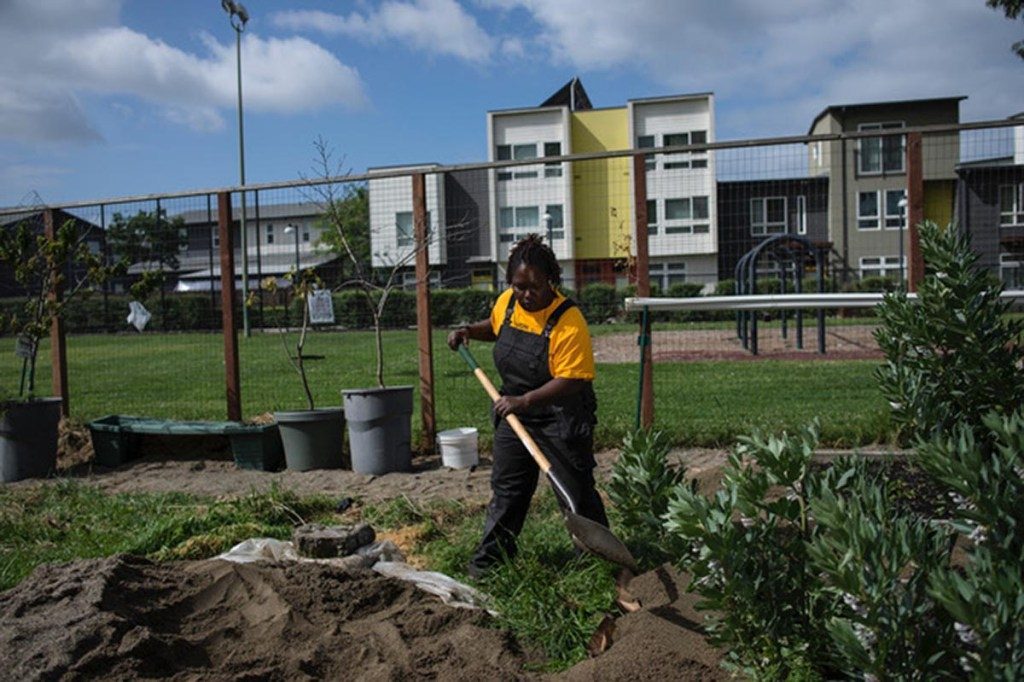Working in America Partners with Craftsmanship Quarterly, New Magazine features Working in America Exhibition Participant Kelly Carlisle
“When Kelly Carlisle is feeling “low-power,” she reads high fantasy, typically novels about sword-wielding heroines who heed the call to adventure. At home, in the car on audiobook, with her daughter, by herself, she consumes these tales whenever she needs refueling. Like right now. The organization that Carlisle founded and directs—Acta Non Verba: Youth Urban Farm Project—is gearing up for the summer, its busiest time of year, and the pressure is mounting. “I’ve been listening to fantasy books for some months now,” she tells me, laughing. “Just finished another series this weekend.”
As a kid in East Oakland, Carlisle watched her parents, who were both street vendors, scrape together a living.
We’re sitting on the splintered bleachers in the corner of Tassafaronga Park in East Oakland, just outside the fence of the quarter-acre plot that Acta Non Verba (or ANV) leases from the City of Oakland. The park is surrounded by Tassafaronga Village, a mixed-income development that’s played a role in cutting crime in the neighborhood. An abandoned Mother’s Cookies factory occupies four derelict acres a few blocks away. A Baptist Church, with a big, white façade sits at the other end of the park, and a sign on the fence of the church parking lot advertises the second coming in both English and Spanish.
Behind us, inside the gate, two of Carlisle’s employees are turning compost and organizing the greenhouse in ANV’s organic farm. Three days a week during the school year, and five during the summer, local kids age 5 to 14 come here to learn how to raise organic produce.
Farm manager Aaron De La Cerda hails from Fresno, where in high school he participated in a magnet program for students interested in agricultural science. Through his instruction, campers grow organic produce that ends up in their homes, and those of subscribers to ANV’s CSA. photo courtesy of Acta Non Verba.
Carlisle’s recent fixation is Rae Carson’s The Girl of Fire and Thorns. “She has this desire to make sure that she’s doing good,” she says of the protagonist. That principle is what both calms and energizes Carlisle—not the transporting quality of the story, but the resonance of its message. When she reads, she says, her attitude is this: “Give me the moral of the story—give it to me! I just need the moral.”
It’s unclear whether Carlisle, whose trove of stories I only got a sprinkling of, sees the episodes of her life as possessing the same intentionality that her favorite authors apply to their work; what I do know is that Carlisle’s journey has been unconventional enough to make anyone stop and think. She talks a lot about her “worldview,” but by the time she was 22 and joining the Navy, she didn’t have much of one, in her view. Nor, six and half years later, with an infant daughter, a failed marriage, and an office job in downtown Oakland, had her worldview gotten any clearer or shapelier. It took being laid off during the recession and having almost nothing for Carlisle to tune in, and allow all the noise, as distressing as it could be, to settle into a coherent message…”
Read the entire article here.
